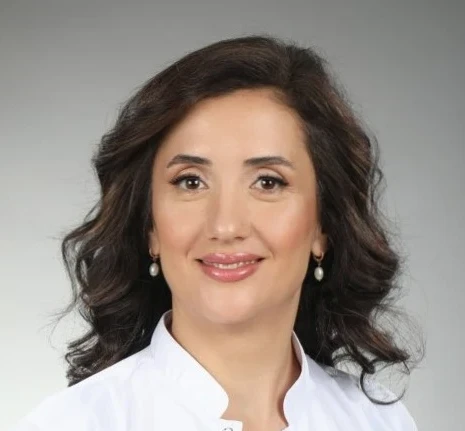Adenoids are lymphoid tissues located at the back of the nasal cavity. Like the tonsils, adenoids are part of the immune system, helping the body fight infections by trapping harmful bacteria and viruses that enter through the nose and throat. While adenoids play a crucial role in infant and early childhood immunity, their function diminishes as a child grows. Typically, adenoids begin to shrink around the age of five and may disappear almost entirely during adolescence.
What Is Enlarged Adenoids?
Adenoids can temporarily swell when fighting infections. However, in some cases, they can become chronically enlarged due to recurrent infections or allergies, leading to persistent nasal obstruction. While some cases resolve on their own, others may require surgical removal if they cause breathing difficulties or frequent infections. In some instances, adenoids may need to be removed along with the tonsils, but this is not always necessary.
Symptoms of Enlarged Adenoids
Children with enlarged adenoids may experience:
- Difficulty breathing through the nose
- Mouth breathing, which can lead to dry mouth and cracked lips
- Nasal speech or a blocked-nose sound
- Noisy breathing, sometimes resembling "Darth Vader" sounds
- Bad breath
- Snoring
- Brief pauses in breathing during sleep (obstructive sleep apnea)
- Frequent nasal or sinus infections
- Fluid buildup in the middle ear, leading to ear infections and hearing loss
If a child develops sleep apnea, it can impact their learning ability, behavior, growth, and cardiovascular health.
How Is Enlarged Adenoids Diagnosed?
A doctor can assess adenoid enlargement by examining the child’s ear, nose, and throat. Swelling in the neck and jaw area may also be checked.
To better evaluate adenoid size, the following methods may be used:
- Endoscopic Examination: A small camera inserted into the nose provides a clear view of the adenoids.
- X-ray: Determines the extent to which the adenoids obstruct the airway.
If an infection is present, the doctor may prescribe antibiotics or nasal sprays. However, if infections persist or cause chronic breathing issues, surgery may be recommended.
What Is an Adenoidectomy?
An adenoidectomy is a surgical procedure to remove the enlarged adenoids. It is one of the most common pediatric surgeries and is often performed alongside a tonsillectomy. If medication does not resolve the issue or the adenoid size severely affects breathing, surgical removal may be advised.
Preoperative Preparation for Adenoidectomy
If sleep apnea is suspected, the doctor may order tests before surgery, including:
- Sleep Study (Polysomnography): Assesses breathing disturbances during sleep.
- Endoscopic Examination: A camera-based evaluation of adenoid size.
Before surgery, the doctor will provide instructions on fasting and medication restrictions. Parents should explain the procedure to their child in a calm and reassuring way.
Postoperative Recovery After Adenoidectomy
Most children return home the same day after surgery, though some may require an overnight hospital stay for observation.
Common postoperative effects include:
- Sore throat, nasal discharge, noisy breathing, or bad breath
- These symptoms usually resolve within a few days
- The adenoid area heals naturally without stitches
Full recovery typically occurs within one week, and children experience improved breathing and fewer infections.
Are There Any Risks Associated with Adenoidectomy?
Most children recover without complications, but as with any surgery, there are potential risks, including:
- Infections
- Mild postoperative bleeding
- Temporary side effects from anesthesia
Following all preoperative and postoperative instructions reduces these risks.
How to Support a Child’s Recovery
- Administer pain relievers as prescribed by the doctor
- Provide plenty of fluids and soft foods such as soup, yogurt, pudding, and mashed foods
- Allow the child to rest for a few days
- Use a humidifier to ease nasal congestion
When to Contact a Doctor
Seek medical attention if the child experiences:
- High fever
- Persistent vomiting after surgery or medication
- Neck pain or stiffness
- Refusal to drink fluids or lack of urination
Seek emergency care if there is:
- Continuous bleeding from the nose or mouth
- Vomiting blood or dark, coffee-ground-like material
Does Removing the Adenoids Weaken the Immune System?
No. While adenoids are part of the immune system, the body has many other defense mechanisms to compensate for their removal. Children who undergo adenoidectomy often experience better breathing, improved sleep, and a reduced risk of infections.









